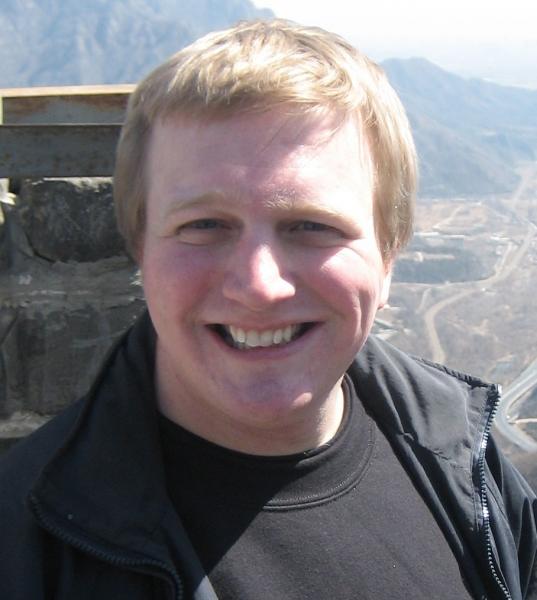Chair's Distinguished Lecture: High-Speed Boundary-Layer Instability and Transition to Turbulence: Fundamentals and Applications
Dr. Joseph S. Jewell Research Scientist, Aerospace Systems Directorate US Air Force Research Laboratory Wright-Patterson AFB, Ohio
Dr. Joseph S. Jewell Research Scientist, Aerospace Systems Directorate US Air Force Research Laboratory Wright-Patterson AFB, Ohio
The boundary layer state (e.g. laminar, turbulent, or transitional) is a critically important factor in hypersonic vehicle design, with profound effects on heat flux, skin friction, drag, and control characteristics. In particular, higher thermal loads, by a factor of four or more, may result from the increased heat transfer due to turbulent flow. Nevertheless, hypervelocity boundary layer transition remains difficult to simulate or predict, especially under realistic flight conditions, and the mechanisms leading to instability are not well understood for many flow regimes.
In this seminar, I present results from experimental and computational investigations focused on bridging the gap between ground-based aerodynamic experiments and the external aerodynamics of hypersonic flight. First, I discuss a fundamental problem in compressible real-gas flow: measuring and characterizing the laminar to turbulent transition process in boundary layer flows in thermochemical nonequilibrium at high enthalpy. In this flow regime, where the second or Mack mode instability dominates for slender, cold-wall cases, nonequilibrium effects for certain species (in our work, carbon dioxide) can actually suppress transition through the absorption of energy from acoustic disturbances through vibrational relaxation. We measure the propagation and growth of turbulent spots within the boundary layer, characterize transition delay for flows in air with increasing mass fractions of carbon dioxide, and also investigate the efficacy of gas injection mechanisms into the hypervelocity boundary layer for inhibiting second mode transition. Finally, recent results relevant to current challenges in hypersonics research are surveyed, including a computational re-assessment of a landmark study on blunt-body transition, hypersonic facility design and optimization, and non-intrusive optical measurement techniques.
Biography:
Joe Jewell is a Research Scientist in the Hypersonics Branch at the U.S. Air Force Research Laboratory on Wright-Patterson Air Force Base, Ohio, where he works through Spectral Energies, LLC, and previously held a National Research Council postdoctoral fellowship. He graduated from the California Institute of Technology with a double major in Aeronautics and Medieval History, and completed a master’s degree in Aerospace Engineering at the University of Michigan before winning the Rhodes Scholarship, which he used to earn a second master’s degree, in hypersonics, at the University of Oxford in the UK. Joe returned to Caltech and completed his Ph.D. in Aeronautics in 2014, supported by the National Defense Science and Engineering Graduate Fellowship, the Boeing Fellowship, and the Jack Kent Cooke Foundation Graduate Scholarship.
He serves on the AIAA Aerodynamic Measurement Technology Technical Committee, as well as the NATO Working Group on Hypersonic Boundary Layer Transition Prediction. His research interests are primarily in experimental fluid dynamics, especially hypersonic aerothermodynamics.
The boundary layer state (e.g. laminar, turbulent, or transitional) is a critically important factor in hypersonic vehicle design, with profound effects on heat flux, skin friction, drag, and control characteristics. In particular, higher thermal loads, by a factor of four or more, may result from the increased heat transfer due to turbulent flow. Nevertheless, hypervelocity boundary layer transition remains difficult to simulate or predict, especially under realistic flight conditions, and the mechanisms leading to instability are not well understood for many flow regimes.
In this seminar, I present results from experimental and computational investigations focused on bridging the gap between ground-based aerodynamic experiments and the external aerodynamics of hypersonic flight. First, I discuss a fundamental problem in compressible real-gas flow: measuring and characterizing the laminar to turbulent transition process in boundary layer flows in thermochemical nonequilibrium at high enthalpy. In this flow regime, where the second or Mack mode instability dominates for slender, cold-wall cases, nonequilibrium effects for certain species (in our work, carbon dioxide) can actually suppress transition through the absorption of energy from acoustic disturbances through vibrational relaxation. We measure the propagation and growth of turbulent spots within the boundary layer, characterize transition delay for flows in air with increasing mass fractions of carbon dioxide, and also investigate the efficacy of gas injection mechanisms into the hypervelocity boundary layer for inhibiting second mode transition. Finally, recent results relevant to current challenges in hypersonics research are surveyed, including a computational re-assessment of a landmark study on blunt-body transition, hypersonic facility design and optimization, and non-intrusive optical measurement techniques.
Biography:
Joe Jewell is a Research Scientist in the Hypersonics Branch at the U.S. Air Force Research Laboratory on Wright-Patterson Air Force Base, Ohio, where he works through Spectral Energies, LLC, and previously held a National Research Council postdoctoral fellowship. He graduated from the California Institute of Technology with a double major in Aeronautics and Medieval History, and completed a master’s degree in Aerospace Engineering at the University of Michigan before winning the Rhodes Scholarship, which he used to earn a second master’s degree, in hypersonics, at the University of Oxford in the UK. Joe returned to Caltech and completed his Ph.D. in Aeronautics in 2014, supported by the National Defense Science and Engineering Graduate Fellowship, the Boeing Fellowship, and the Jack Kent Cooke Foundation Graduate Scholarship.
He serves on the AIAA Aerodynamic Measurement Technology Technical Committee, as well as the NATO Working Group on Hypersonic Boundary Layer Transition Prediction. His research interests are primarily in experimental fluid dynamics, especially hypersonic aerothermodynamics.
| Building: | Francois-Xavier Bagnoud Building |
|---|---|
| Event Type: | Presentation |
| Tags: | Engineering |
| Source: | Happening @ Michigan from Aerospace Engineering |


